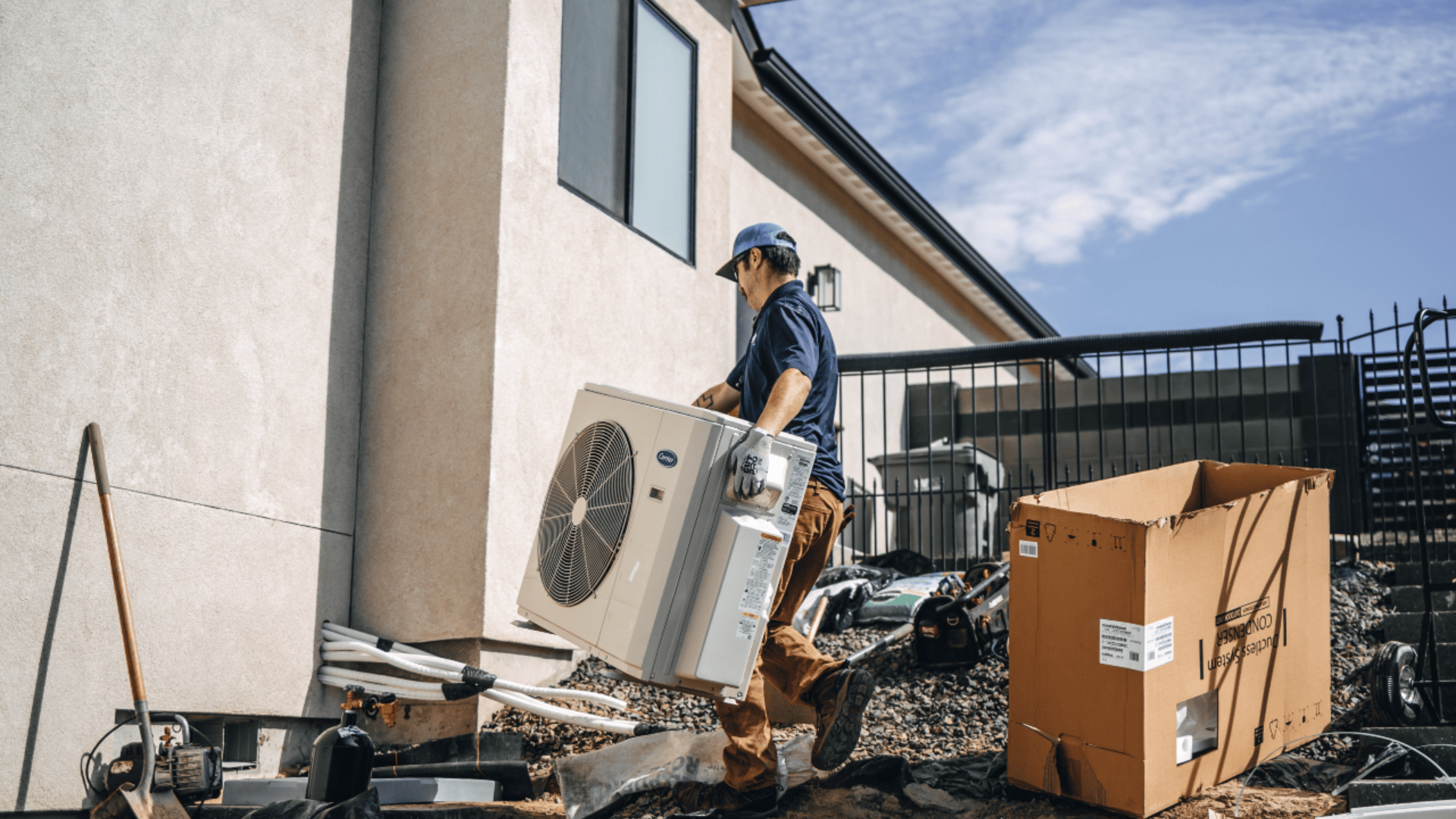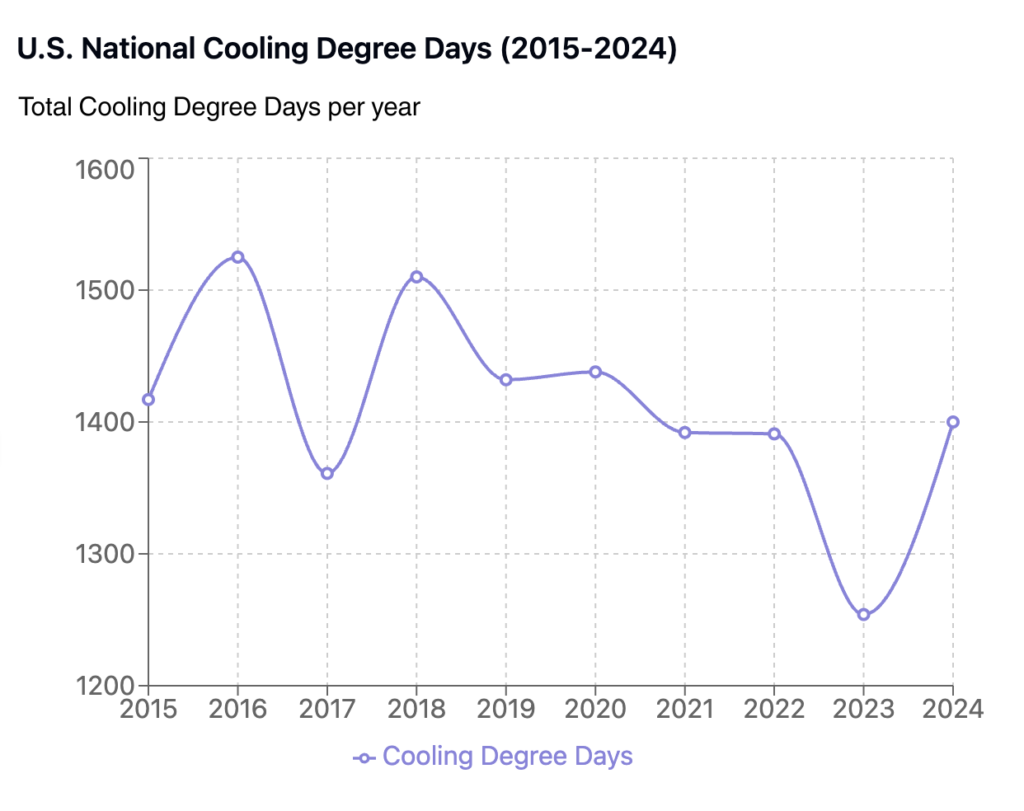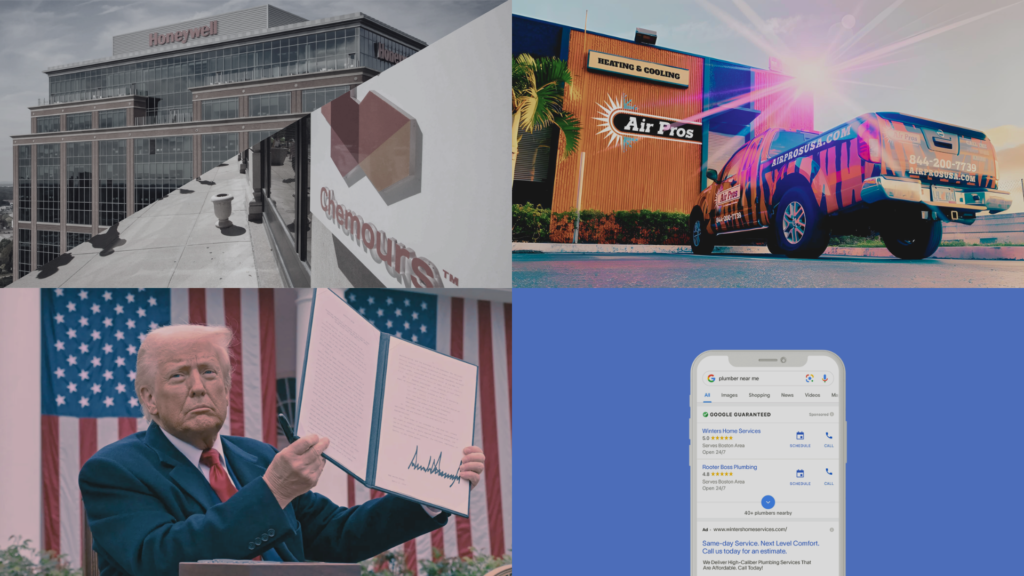Mapped: 10 years of U.S. cooling demand
Despite a rise in global temperatures, U.S. cooling demand trended downward between 2015 and 2024, according to national weather data

Image: Apollo
U.S. cooling demand has trended downward over the past 10 years, despite a rise in global temperatures, according to national weather data analyzed by Homepros.
Why it matters: Cooling demand, measured by Cooling Degree Days (CDDs) — the difference between a day’s average temperature and 65 ℉ — serves as a general proxy for HVAC demand, particularly during warmer seasons.
What’s happening: The U.S. has seen an average decrease of nearly 14 CDDs a year since 2015, though with regional variations. Nationwide, cooling demand peaked in 2016 and hit its lowest point in 2023.
- Of note: The years from 2020 to 2023 marked the longest consecutive decline, with nationwide cooling demand dropping a total of 13 percent.

Zoom in: The national trend masks a mixed regional picture.
- The South heated up: Arkansas, Louisiana, Oklahoma, and Texas experienced a warming trend, especially between 2021 and 2023, when cooling demand grew 12 percent.
- The “Heartland,” from North Dakota to Missouri, was the only other region showing an overall increase in cooling demand during the decade.
- The East cooled down: The most dramatic shift occurred along the East Coast, from Delaware to Florida, with cooling demand falling 20 percent between 2019 and 2023 alone.
- Elsewhere across the country, including New England and the Mountain and Pacific states, demand for cooling declined steadily, but not significantly.

See which states make up each region
What’s next: Despite the downward trend, household cooling demand is projected to grow by over 70 percent by 2050, according to the Energy Information Administration.
- “These large future projections are likely under-estimates because they’re based on air temperature (CDD) and therefore don’t account for additional cooling demand due to humidity,” added research group Climate Central.
Editor’s note: Images were generated using data from the National Weather Service.
📬 Get our stories in your inbox
Keep reading
Quilt exec on industry giants, contractor partnerships, and next-gen heat pumps
A conversation about competing with century-old manufacturers, engaging with contractors, and product innovation
Goldman Sachs’ private equity arm to acquire Sila Services
The deal values the company at about $1.7 billion, or ~17x its 12-month EBITDA of just under $100 million, according to a few people familiar with the matter
April’s most popular stories
A bankruptcy filing, R-454B drama, and a new slate of tariffs


